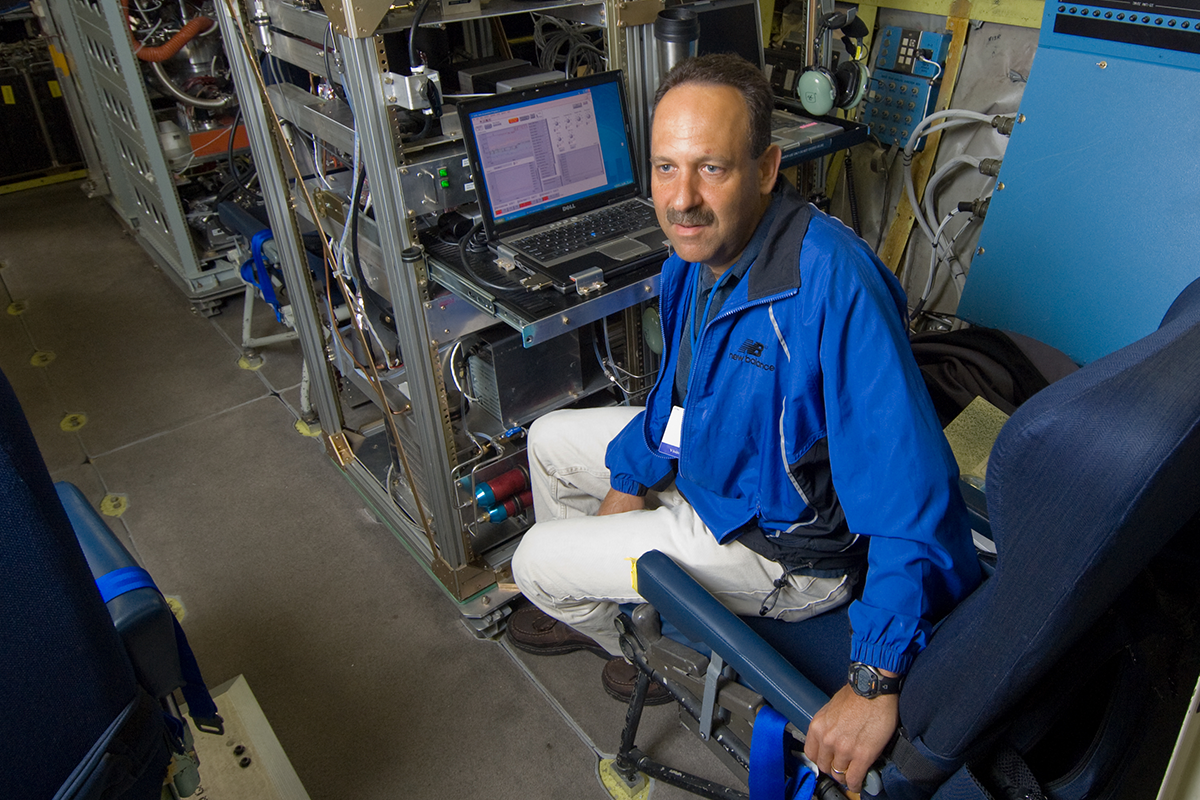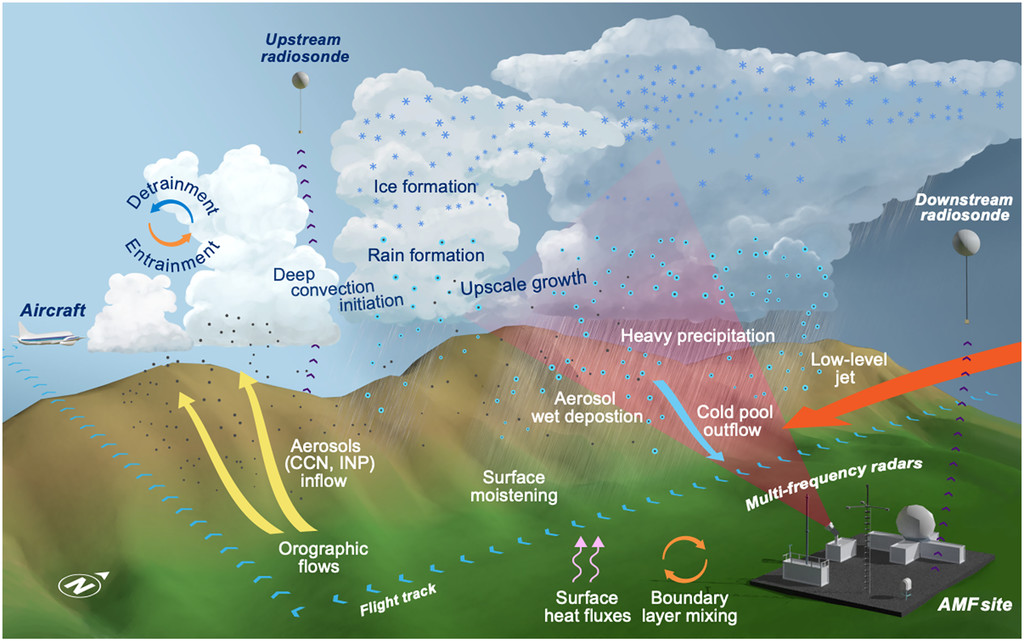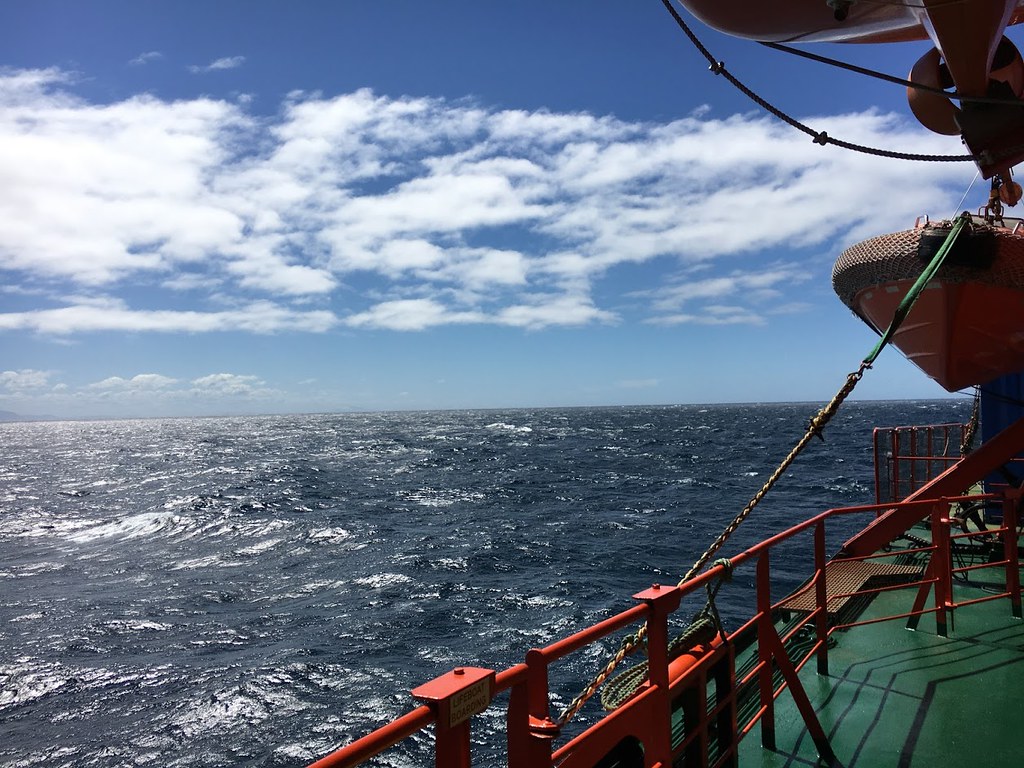
A veteran researcher continues a career-long search for ice-formation secrets
Colorado State University atmospheric scientist Paul DeMott grew up in Elmira, New York, a small river city in a rural region with a long history of epic floods.
As a teenager, he was gripped by tales of dramatic flooding, but had never seen nature act up that way―until June 22, 1972.
That day and the next, DeMott witnessed the Chemung River surge over its banks and flood most of Elmira. Fast-moving water knocked houses off their foundations and raced down streets in churning, watery walls that almost touched the streetlights.
This disaster, the tail end of Hurricane Agnes, contributed to DeMott’s eventual entry into the science of clouds, rain, and weather.
Before that summer day, admits DeMott, “I had developed a morbid fascination with floods, but that reset my attitude.”
Today, he is one of the most prominent American scientists investigating ice nucleation, a vital process that relies on the seed-like character of ice-nucleating particles (INPs).
Measured in microns, or fractions of a micron, INPs are tiny. (A micron is one-millionth of a meter.) However, these critical bits of mineral dust or biological matter or burned biomass cause water vapor to form atmospheric ice. That gives INPs an out-size influence in how clouds form, how much sunlight they reflect, and how long they live.
Without ice in clouds (and the ice nucleation that makes it possible), Earth’s mid-latitudes would have very little rain. That’s because ice makes precipitation large enough to fall.
ASR and Ice Work
Ice nucleation happens in two ways: heterogeneously, when a very cold droplet of water freezes and grows (crystalizes) around an INP. And homogeneously, when a small number of molecules within a frigid droplet spontaneously arrange themselves into repetitive patterns to form an ice crystal.
Researchers also look at all the things INPs are made of, as well as how they are swept up from the land and sea and transported around the world.
DeMott is a principal or co-principal investigator of 17 active or recent grants; all but two relate directly to ice nucleation. His work touches on climate regimes across the globe, including the Arctic, the American Midwest, the Norwegian Sea, mountains in Argentina, and the frigid Southern Ocean, which swirls stormily around Antarctica.
The most recent grants (among dozens for DeMott over decades) go back to 2020 and forward to 2023. Sponsors for his research include the U.S. Department of Energy (DOE), the National Science Foundation, and NASA.
DOE funded more than half of the 17 latest projects. DeMott highlights a few supported by DOE’s Atmospheric System Research (ASR) program.
One was a small field campaign designed to close the gap between predicted and observed INPs at a DOE atmospheric observatory in Oklahoma. Another effort evaluated how INPs vary across hemispheres and between land and marine regions, including the Southern Ocean.
Other ASR-funded projects DeMott is part of share a locale: the Sierras de Córdoba mountains in Argentina. The region, said to generate the world’s tallest and widest thunderstorms, was the site of the DOE’s data-rich 2018―2019 Cloud, Aerosol and Complex Terrain Interactions (CACTI) field campaign.
Along with insights into other complex processes, CACTI provided new opportunities to study ice nucleation. That plays a role in the campaign’s main task: to investigate how convective systems―dependent on the microphysics of ice and rain formation― initiate, evolve, and dissipate.
Ice Seeded by Land Surfaces

With DeMott as a co-investigator, CACTI was conducted by DOE’s Atmospheric Radiation Measurement (ARM) user facility, which operates three fixed and three mobile atmospheric observatories across the world.
Among other things, the authors note the initiation of ice in congestus clouds across a range of temperatures. Congestus clouds are towering, unstable cumulus clouds associated with developing convection and heavy rain.
The study reflected a prominent CACTI goal: to record and investigate processes linked to the formation of rain and ice in convective clouds.
Going Large
With its array of surface and airborne instruments, CACTI targeted a lot of atmospheric processes, including ice formation, rain formation, soil moisture, and aerosol deposition.
In the air, ARM’s Gulfstream 159-1 (G-1) research plane housed a cloud particle imager and, importantly, filters that collected aerosol samples. These were used later to measure INPs back in DeMott’s laboratory.
To date, CACTI has contributed the largest INP dataset in subtropical South America.
“Much of my recent work has been represented in publications centered around such large campaigns,” says DeMott, such as CACTI. “Our group’s detailed research papers and other collaborative papers are still now being submitted.”
Some of those coming papers relate to the 2019―2020 Multidisciplinary Drifting Observatory for the Study of Arctic Climate (MOSAiC) and a geographically related ARM field campaign in 2019―2020 called Cold-Air Outbreaks in the Marine Boundary Layer Experiment (COMBLE).
Data from a variety of climate regimes can help DeMott and others sort through a lot of issues: how temperature and spatial variations of INPs affect ice formation; how to resolve their organic and inorganic sources; and how to build an ice-nucleation dataset designed to integrate with others across the world.
An Ocean and Ice

DeMott also points to the Southern Ocean and Oklahoma papers as examples of ASR-funded work.
An April 2021 study he coauthored provided an overview of four field campaigns that delved into clouds, aerosols, precipitation, and radiation in the Southern Ocean.
Two of them were funded by ASR and used ARM assets: the land-based 2016―2017 Macquarie Island Cloud and Radiation Experiment (MICRE) and the ship-borne Measurements of Aerosols, Radiation, and Clouds over the Southern Ocean (MARCUS) from 2017 and 2018. DeMott, a MARCUS co-investigator, was one of a team that developed plans for both these studies beginning in 2014.
A third campaign, funded by the NASA and aided by ARM data, involved an instrumented Australian research vessel in 2016. A fourth effort, an international campaign in 2018, was supported in part by the National Science Foundation.
All four Southern Ocean campaigns used lidar, radar, and other instruments to scour the Southern Ocean for rare in situ measurements, emerging with the largest combined, comprehensive dataset for the atmosphere south of the oceanic polar front.
In this largely pristine environment, far from continental air sources, INPs were hard to find. Concentrations were lower than comparative measurements in the Arctic. Unsurprisingly, sea spray was the largest INP source.
Closure―and a Vision
The second ASR-related paper was an October 2021 investigation of aerosols and ice formation in Oklahoma, at ARM’s Southern Great Plains (SGP) atmospheric observatory. INPs, of course, were more abundant in this setting of farmland and frequent storms. But being able to specify the number concentrations and sources of such particles, as ever, remains highly uncertain―a situation the Aerosol-Ice Formation Closure Pilot Study tried to allay.
“Closure,” in this case, is an attempt to close the gap between measurements of observed INPs and the predicted rates of ice formation by aerosols in ambient air.
The campaign at SGP succeeded in some ways―but also pointed to the need for continued efforts to understand INP sources not yet captured in parameterizations. Understanding which particles do the work of ice formation, and at what rates, is needed to improve the predictability of clouds and precipitation in models.
From continental and oceanic ice-nucleation investigations, “we have more coming,” says DeMott of publications in the works.
His vision is that ASR-funded studies will compare, contrast, and connect ice-nucleation data for a unified understanding of INP budgets in a variety of continental environments. Those include Argentina and the Oklahoma ARM facility as well as colder settings, like the South Pole, via MARCUS and MICRE, and the Arctic, by way of MOSAiC and COMBLE.
In all, says DeMott, researchers need “to come up with better ways to describe ice nucleation in regional and global models.”
# # #Author: Corydon Ireland, Science Writer, Pacific Northwest National Laboratory
This work was supported by the U.S. Department of Energy’s Office of Science, through the Biological and Environmental Research program as part of the Atmospheric System Research program.

